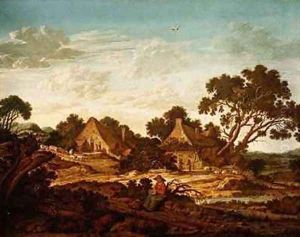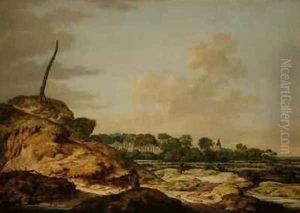Johannes Goedaert Paintings
Johannes Goedaert was a Dutch Golden Age painter, entomologist, and illustrator, born in Middelburg in the year 1617. His work as an artist is characterized by his dual interests in painting and the study of insects. Goedaert is considered one of the early pioneers in the field of entomology due to his detailed observations and illustrations of insect life cycles, which he often depicted in his artwork.
Goedaert's artistic journey began with an apprenticeship under the painter Ambrosius Bosschaert the Elder, who was well-known for his still life and floral paintings. This training influenced Goedaert's own style, which often incorporated botanical and zoological elements. Although Goedaert was not as widely recognized as some of his contemporaries during his lifetime, his methodical approach to documenting insects in various stages of development was groundbreaking.
His contributions to entomology are encapsulated in his three-volume work titled 'Metamorphosis et historia naturalis insectorum,' published between 1662 and 1667. This work is notable for its combination of scientific observation and artistic representation of insects. Goedaert meticulously recorded the life cycles of a variety of insect species, from egg to larva, pupa, and adult, which was a novel approach at the time.
In the realm of painting, Goedaert specialized in still lifes, often with a focus on natural history subjects, including flowers, fruits, and small creatures, particularly insects. His paintings are characterized by a careful attention to detail, a testament to his observational skills.
Johannes Goedaert's death occurred in the year 1668 in his hometown of Middelburg. His dual legacies as an artist and as an early entomologist continue to be appreciated in the histories of both art and science. His work not only contributed to the understanding of insects but also reflected the broader interest in natural history that was emerging during the Dutch Golden Age.

